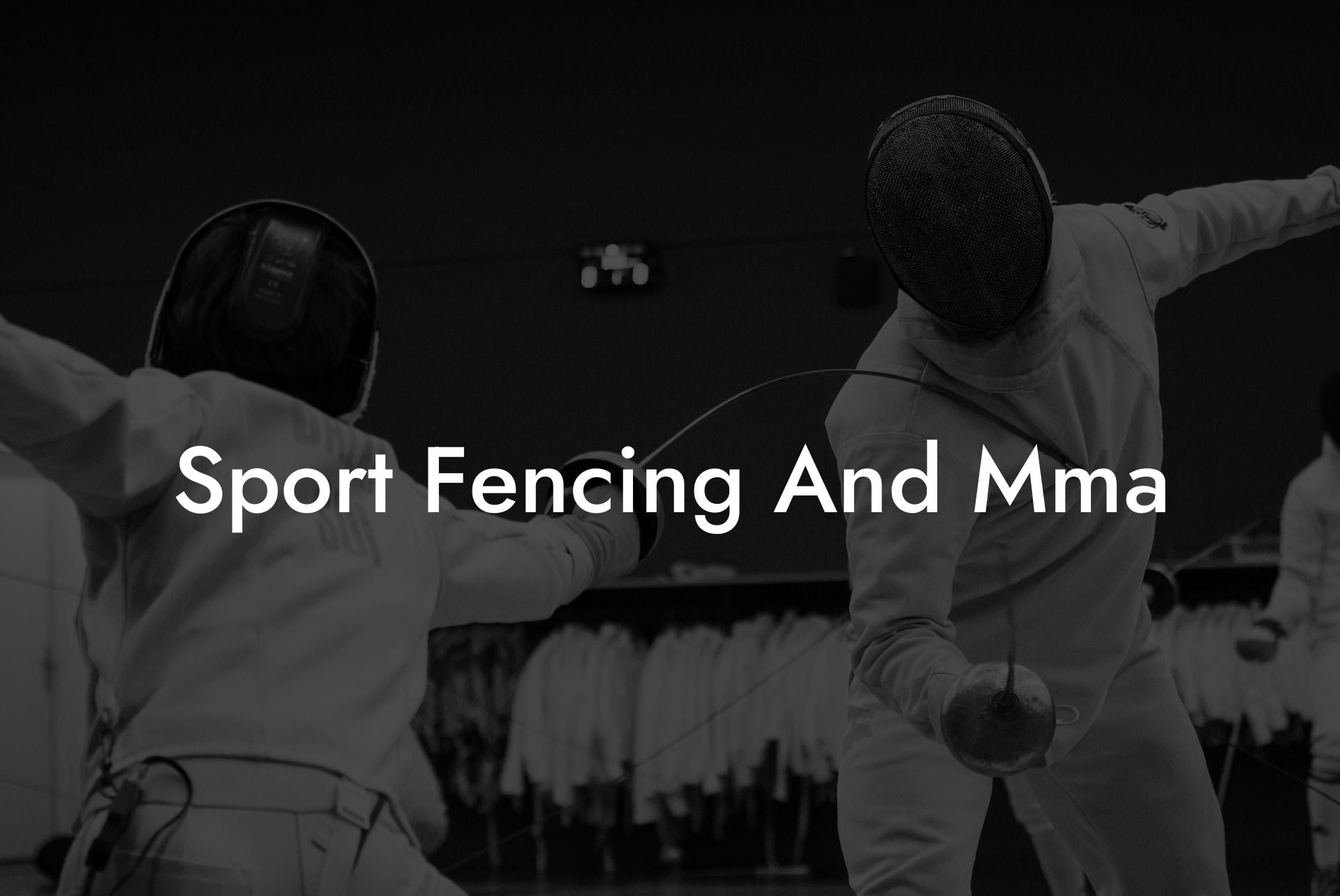When it comes to fiercely competitive and captivating martial sports, sport fencing and MMA (Mixed Martial Arts) stand out as two amazing disciplines. Both of these sports showcase incredible skill, speed, and strategy. But how do they compare, and can elements from one improve the other? Let's explore the exciting world of sport fencing and MMA, where precision meets power and passion.
The Art of Sport Fencing
Sport fencing is a modern combat sport with roots in ancient swordplay. The sport has evolved into a skillful and strategic battle of wits, agility, and precision. There are three distinct types of fencing: epee, foil, and saber. Each type has its weapon, target area, and scoring rules. Fencers wear protective gear, including masks, jackets, gloves, and pants, to ensure their safety throughout the match.
Epee Fencing
In epee fencing, the entire body is a valid target area. Fencers score points by striking their opponents with the tip of the epee, a sword-like weapon with a large circular guard. The first person to hit their opponent scores a point, and double touches are possible if fencers hit each other within milliseconds.
Foil Fencing
Foil fencing focuses on accurate and precise attacks, with only the torso considered a valid target area. The foil is lighter and more flexible than an epee, with a smaller guard. Points are scored with the tip of the weapon only, and right-of-way rules play a big part in determining who scores points.
Saber Fencing
Saber fencing is the most aggressive form of sport fencing, with the entire upper body as the target area, including the head, arms, and torso. The saber, a lightweight weapon with a curved guard, allows for both cutting and thrusting actions. Speed, timing, and explosive movements are key to winning bouts in saber fencing.
MMA: Mixed Martial Arts
MMA is a full-contact combat sport that blends various martial art disciplines, such as Brazilian Jiu-Jitsu, Muay Thai, boxing, and wrestling, into a thrilling and brutal competition. Fighters employ a combination of striking, grappling, and submission techniques to defeat their opponents. MMA events, such as the UFC (Ultimate Fighting Championship), have gained immense popularity worldwide due to the sport's raw intensity and exciting matchups between skilled combatants.
Striking and Grappling
In MMA, striking includes punches, kicks, knees, and elbows, delivered with power and precision to wear down and incapacitate an opponent. Grappling techniques involve taking an opponent to the ground and controlling them, either for ground-and-pound strikes or submission holds. The interplay between striking and grappling forms the foundation of MMA strategy and tactics.
Submissions and Endurance
Submission holds, such as chokes and joint locks, are an essential aspect of MMA. Fighters must master the art of applying these techniques effectively while also defending against them. The intensity and seemingly endless variety of grappling exchanges in MMA require tremendous physical and mental endurance from athletes.
Sport Fencing And Mma Example:
Imagine a scenario where a high-level sport fencer decides to transition to MMA. The fencer has a strong foundation in footwork, distance management, and lightning-fast reflexes. However, they must now learn to incorporate striking and grappling techniques and adapt to the grappling-heavy aspect of MMA.
On the other side of the cage, an MMA fighter with an excellent striking background decides to try sport fencing. They have experience with powerful kicks and punches, but they must now adjust to the swift footwork and refined blade work of fencing.
Both athletes would face unique challenges in adapting to their new sports, but the experience gained from their original disciplines would inevitably enhance their new pursuit. The fencer would develop a striking game that capitalizes on their speed and accuracy, while the MMA fighter would learn the art of precision and finesse in fencing.
Sport fencing and MMA, though vastly different disciplines, showcase the grace, power, and strategy of martial arts. Both sports are intense, exhilarating, and demand the highest level of skill and dedication from their athletes. Perhaps the true beauty lies in the potential for cross-training and mutual influence, creating a new breed of athletes that bring the best of both worlds to the arena. If you found this article interesting, please share it with your friends and explore other guides on Anchorage Fencing Club to dive deeper into the captivating world of fencing.













